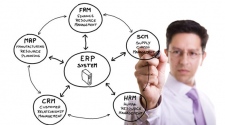Throughout my college career, all of my preconceived notions about the Criminal Justice System have been shattered. In the beginning, I was astonished to hear that only 10% of crimes are cleared in the United States. I would have liked to believe, and did believe before a course in the subject, that in the end, the bad guy gets caught and goes to prison to pay for his sins. I have learned that this is just not reality. I majored in Criminology hoping that someday I would be able to catch the criminal through fingerprints, DNA, and microscopic fibers found at a crime scene. The criminal would then be arrested and go to prison to serve his full sentence. Again, I was ignorant of the facts. I do not like to be ignorant, and therefore, these facts have helped enlighten me and open up the door to the truth behind how Criminal Justice System really works.
I have learned that the Criminal Justice System has little access to crime. Police rarely catch the criminal through investigations, forensic or otherwise. In most cases, someone has to tell the police who committed the crime for there to be an arrest made, and the crime to be considered cleared. The Funnel Effect shows how very little criminals make it all the way through the Criminal Justice System. At the top of the funnel, all of the criminals committing crimes enter, and as they pass down through, many are filtered out for numerous different reasons. Perhaps the crime was never reported, allowing those criminals to escape the system. Maybe someone did report the crime, but an arrest was never made because police investigations turned up unsuccessful. Those criminals now also escape. Another filter could be that the judge throws out a case because he or she finds that the search and seizure of evidence by the police was unlawful, allowing those criminals to be filtered out of the funnel. In the end, the smallest part of the funnel, few criminals actually make it to prison because of all the different reasons that crime is not able to be solved.
The way the courts operate is also very interesting to me. I was used to watching Court TV and seeing celebrated cases played out, thinking that this is what all defendants experience. I was mistaken once again. I quickly learned that the courts are up to their necks in cases. Plea bargaining happens a lot of the time when a case comes up that the courtroom work-group has seen before. They know how the case will be played out in front of a jury and most likely how the jury will rule. Instead of wasting time and money on cases like these, everyone agrees on what would be fair, usually probation, and moves along.
The Wedding Cake Model is a way to differentiate between different types of cases. The top layer consists of celebrated cases, the ones that are in the news and on television, usually because they are rare cases. The second layer includes serious felonies, such as murder and rape. These are considered the real criminals among the courtroom work-group. The third layer is reserved for the less serious felonies, such as drug charges. These people are considered less dangerous and more of just losers in society. The fourth layer consists of all misdemeanors. The Wedding Cake Model is important in understanding how the courts deal with routine cases. Serious felonies will get Prisons terms, while less serious felonies and misdemeanors may get little jail time or probation. The three main factors that determine what a criminal’s punishment will be are: 1) was there harm or injury caused to the victim? 2) Does the offender have a prior criminal record? and 3) What was the relationship of the offender to the victim? This last one is important because crimes committed against strangers get a more severe sentence than crimes committed against friends and acquaintances. The Wedding Cake Model will also be helpful when trying to explain the different approaches for reducing crime.
Conservative and Liberal views on reducing crime vary drastically. Conservatives want to “get tough on crime” by punishing, deterring, and incapacitating criminals. They want to “dip into the third layer” and start giving stricter sentences to less serious felons, believing that this will create a general deterrence and cause other people to think twice about committing crimes. They believe that more police officers will equal less crime. Conservatives want to lessen the liability of cops, and reduce the number of cases being thrown out due to illegal search and seizures and unlawful means of getting a confession. They believe that criminals have too many rights, and police officers do not have enough.
Unfortunately, Conservatives are way off base. Getting tough on crime has been proven not to work. The Kansas City Preventive Patrol Experiment proved that more police and a greater police presence do not equal a drop in crime rates. General deterrence is based on the idea that criminals are rational human beings, when in fact, most crimes that are committed are impulsive crimes. Also, criminals such and drug dealers and prostitutes (third layer criminals) being taken off the street affect the market of supply and demand. Less drug dealers on the corner do not mean less drug addicts willing to buy the drugs. In effect, more drug dealers emerge because of the demand. Then, because of crowded jails and prisons, the original dealers are let out relatively quickly and go back to doing what they know. Now there are twice as many drug dealers on the streets, and the “get tough” policy has proved more harmful than good.
People age in and out of crime. The prime crime age is 14-24 years old. Once people start moving out of the prime crime age, their criminal behavior tends to drop dramatically. Locking people up in prison has proven to stunt the aging out process. The prison environment teaches criminals how to be better criminals, and shuts them off from the outside world, where most people around age 24 start realizing they may want a family, a steady income, and to quit the “party all the time” lifestyle. Unfortunately, in prison there is no such hope for these things, and criminals tend to not age out, and get released only to commit more crime. In the meantime, the younger generation has aged in to the prime crime age, and now more crime is being committed than if the criminals were never in prison in the first place.
Liberals have not done any better when it comes to creating theories to reduce crime rates. Their beliefs are that rehabilitation and reeducation are the keys to less crime. Liberals prefer probation and parole over prison time, with the belief that offenders can more easily integrate back into society and live lawful lives this way. Again, this does not work. Probationers and parolees regard these services not as help, but as another form of punishment. They resent the system for trying to keep them from their everyday lives. Rehabilitation strives to speed up the aging out process by teaching criminals other strategies to use in their everyday lives, without resorting to crime. Again, criminals view this as more of a punishment than a helpful approach, and just something else keeping them from doing what they want to be doing. Because of these reasons, dropout and failure rates are high among rehabilitation programs. Relapse and recidivism rates also soar when rehabilitation programs fail to work, and the criminal usually ends up back in prison.
A point that Liberals hit right on the head would be the belief that eliminating race discrimination in the Criminal Justice System will reduce crime. Discrimination against poor, male, minority youths is deeply embedded in the Criminal Justice System culture. It is denied by the CJS, possibly because of the differences in the culture groups. Police culture tends to be White, middle-class males with a military background who live segregated lives. Court culture tends to be White, middle-class males with a college background also living segregated lives. The two are very similar to each other, but vastly different from the street crime culture. Street crime culture tends to be poor, disproportionately minorities living segregated lives. You can see how the differences reinforce a White dominated police force and court system. Although unconscious, the discrimination exists and affects the outcome of the people who are being sent to prison and those who are being sent home.
Another Liberal view is decriminalization of victimless crimes and public health problems can decrease crime rates. These types of crimes include public drunkenness, drugs, gambling, disorderly conduct, vagrancy, sexual behavior crimes, juvenile status offenses, and abortion. There are a few rationales for decriminalizing these offenses which include an overburdened justice system. Less criminals being arrested would reduce the number of cases that would have to be processed, and put less burden on our already overcrowded jails and prisons. It would also significantly reduce the huge amount of money we spend every year to pay for criminals to go to court and be in prison. Decriminalization would also eliminate the deviant economies that erupt when something is made illegal, yet there is still a market for it, thus reducing some crime. It would instead create legal economies and legal jobs, which can also take a part in reducing crime.
Something I found extremely interesting was Wolfgang’s Birth Cohort Study. His birth cohort included all the males born in Philadelphia in the year 1945. Until the age of 18, Wolfgang traced the police contacts using police and school records of 9, 945 juveniles. The major finding of this study was that 6 percent of offenders were responsible for 50 percent of crimes. Although this is misleading (only factors in who got caught), this study made Criminologists believe that they could lower crime rates if they could just identify who the high rate offenders were early on, and be able to stop their later crimes by locking them up. There were many problems with this. The “usual suspects” problem was that they would discriminate against the young, poor, minorities identifying them as HROs when they really were not, based on an unconscious bias toward this group. This leads to the Prediction Problem. How do we know who is an HRO and who is not? How do we distinguish between spree offenders and chronic offenders, and how would we be able to catch the HROs early in their careers, since catching them late would be unhelpful in reducing crime rates? Criminologists thought that they could use three basic methods to predict who the High Rate Offenders were. The first was that all HROs must have specific characteristics that identify them. They would find people who met these characteristics and lock them up for life. This was not concrete and obviously did not work. The second was looking at the history of the offender and predicting that they will commit the same crimes again. This does not necessarily identify HROs because the people who are not getting caught, possibly because they are good at what they do since they do it so often, are overlooked and you are locking people up for crimes they have not yet committed. The third approach is clinical evaluation where a trained professional interviews a person and determines, based on their experience, whether or not the person is an HRO. Again, this does not work. Looking at employment records and family and social history cannot identify High Rate Offenders. These methods of identification are no better than guessing and do not lower crime rates.
In situations where the previous methods have been used, false positives and false negatives emerge. A false positive is when a person is identified as a HRO when they are not. A false negative is when a person is not identified as a HRO, when they are. In both cases serious consequences can occur for making the wrong identification. Making a false positive identification is unjust in the sense that you are labeling someone as something they are not. This can result in violent reactions from people who would have, otherwise, not been violent. False positives create overcrowding in the prison system and cost billions of dollars, when in reality the people should not be there anyway. False negatives can also have violent consequences. Actual HROs who are not identified can be let out of prison only to commit more crimes. Neither of these strategies work to reduce overall crime rates, and in fact, create even more problems.
Taking these courses in college, I have learned that the Criminal Justice System is a complex world that takes years and years to study to fully understand. I am grateful, however, to have gotten to peek inside and learn all the information I did throughout the semesters. I feel informed about how the system really works, and enjoy telling my family and friends the myths and facts about what is actually taking place in the world of criminology and sociology. I can honestly say that I have gotten more out of these Criminology classes than so many of the other classes I have taken throughout my college career. I have learned what does, and definitely what does not, work when it comes to lowering crime rates. All of my previous beliefs on the Criminal Justice System have changed, and I feel a greater awareness of what is going on in the world in which I am growing up.












